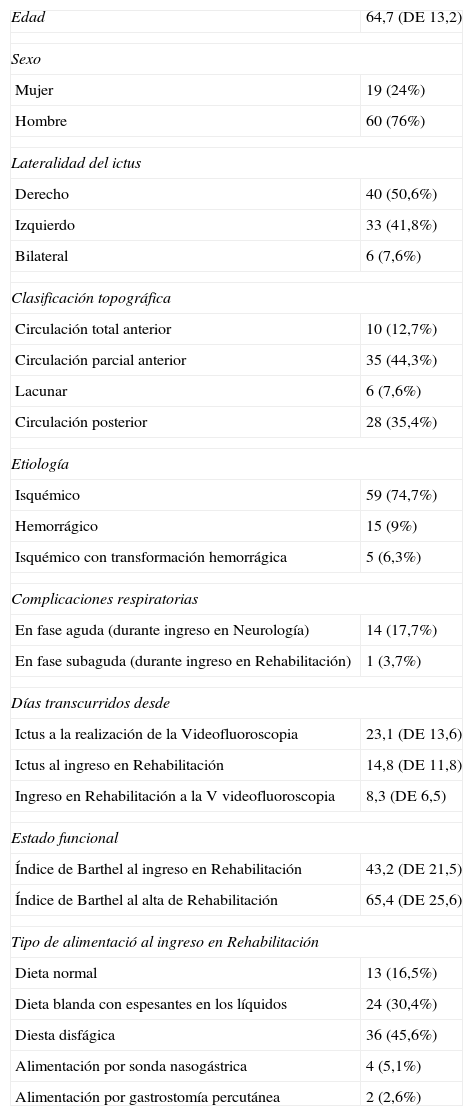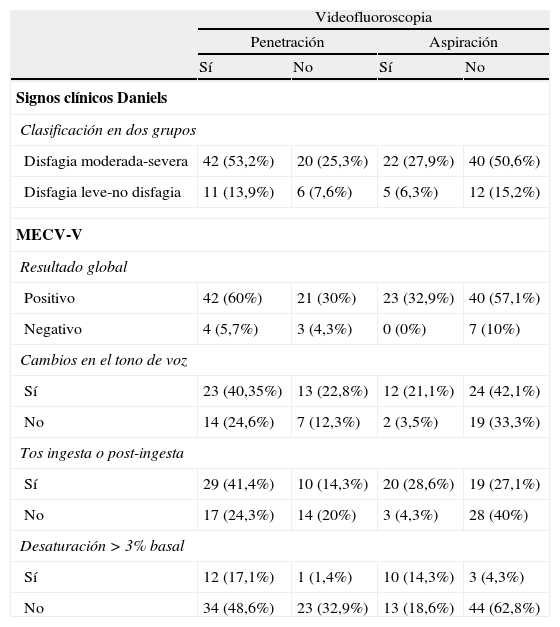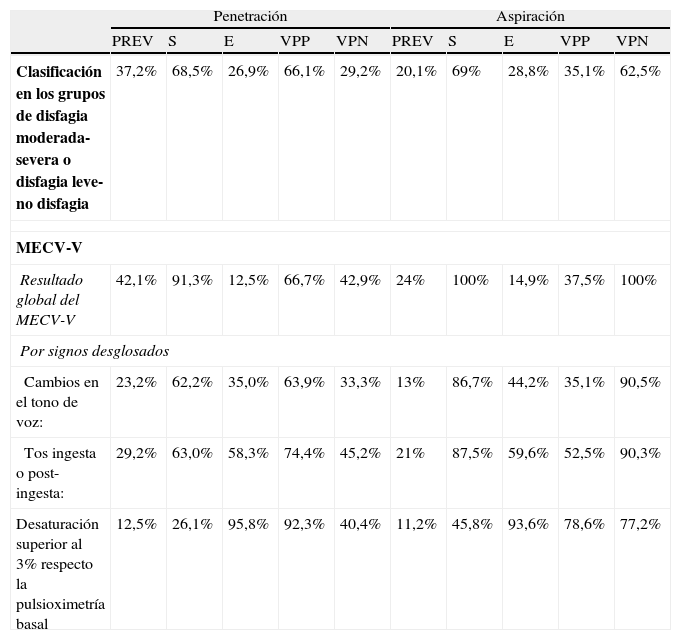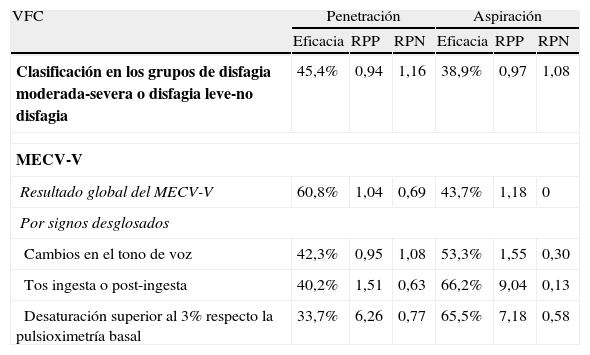La presencia de disfagia condiciona complicaciones como la desnutrición, deshidratación, neumonía e incluso la muerte del paciente, repercutiendo en los costes sanitarios. Existen métodos de detección precoz de la disfagia basados en signos clínicos y métodos instrumentados que pueden aplicarse en la cabecera del enfermo.
ObjetivosDeterminar la utilidad del la valoración de Signos Clínicos y del Método de Exploración Clínica de Volumen-Viscosidad (MECV-V) y evaluar su eficiencia para detectar la broncoaspiración en la fase aguda y subaguda del ictus.
Pacientes y métodosEstudio retrospectivo de una cohorte de 79 pacientes. Se comparan los parámetros clínicos y el MECV-V con los resultados objetivados con la videofluoroscopia (VFC). Se calculan las variables que determinan la fiabilidad y el valor global de un método diagnóstico: sensibilidad, especificidad y valores predictivos.
ResultadosLos signos clínicos para detectar disfagia grave (aspiración) obtuvimos una sensibilidad del 69% y una especificidad del 28,8%, El MECV-V detectó aspiración con una sensibilidad del 100% y una especificidad del 13,6%. El valor predictivo negativo fue respectivamente del 62,5 y 100%, la eficiencia diagnóstica fue de 0,38 y del 0,44% respectivamente.
ConclusiónLa valoración del paciente disfágico basado en los datos de exploración clínica y el MECV-V resulta en un cribaje de bajo coste, de fácil aplicación y muy sensible. El MECV-V presenta mayor sensibilidad, especificidad y eficiencia, permitiendo ajustar dietas precozmente y decidir si precisa de una valoración instrumentada.
The presence of dysphagia has been associated to dehydration, nutritional disorders, pneumonia and even death of the patient, this having an affect on the health care costs. There are methods to detect dysphagia early based on evaluation of the clinical signs and methods that can be used at the bedside of the patient.
ObjectivesTo determine the utility of the evaluation of the clinical signs (CS) and the volume-viscosity test (V-VST) and evaluate their efficacy to detect risk of aspiration in the acute and subacute phase of stroke.
Patients and methodA retrospective evaluation of a cohort of 79 stroke patients was performed. We compared the clinical signs and V-VST with the results observed with the videofluoroscopy (VFC). The variables that determine accuracy and overall value of a diagnostic method, that is, sensitivity, specificity, and positive (PPV) and negative (NPP) predictive values, were calculated.
ResultsA sensitivity of 69% and specificity of 28.8% was obtained for the Clinical Signs to detect severe dysphagia (Aspiration). V-VST detected aspiration with 100% sensitivity and 13.6% specificity. NPP was 62.5% and 100%, respectively. Diagnostic accuracy was 0.38 for clinical signs and 0.48 for V-VST.
ConclusionUsing CS and V-VST for the evaluation of the dysphagic patient is a low-cost screening method that is easy to apply and highly sensitive. The V-VST offers a higher sensitivity, specificity and accuracy and makes it possible to modify the diet early and to decide whether instrumental assessment is indicated.
Artículo
Comprando el artículo el PDF del mismo podrá ser descargado
Precio 19,34 €
Comprar ahora











